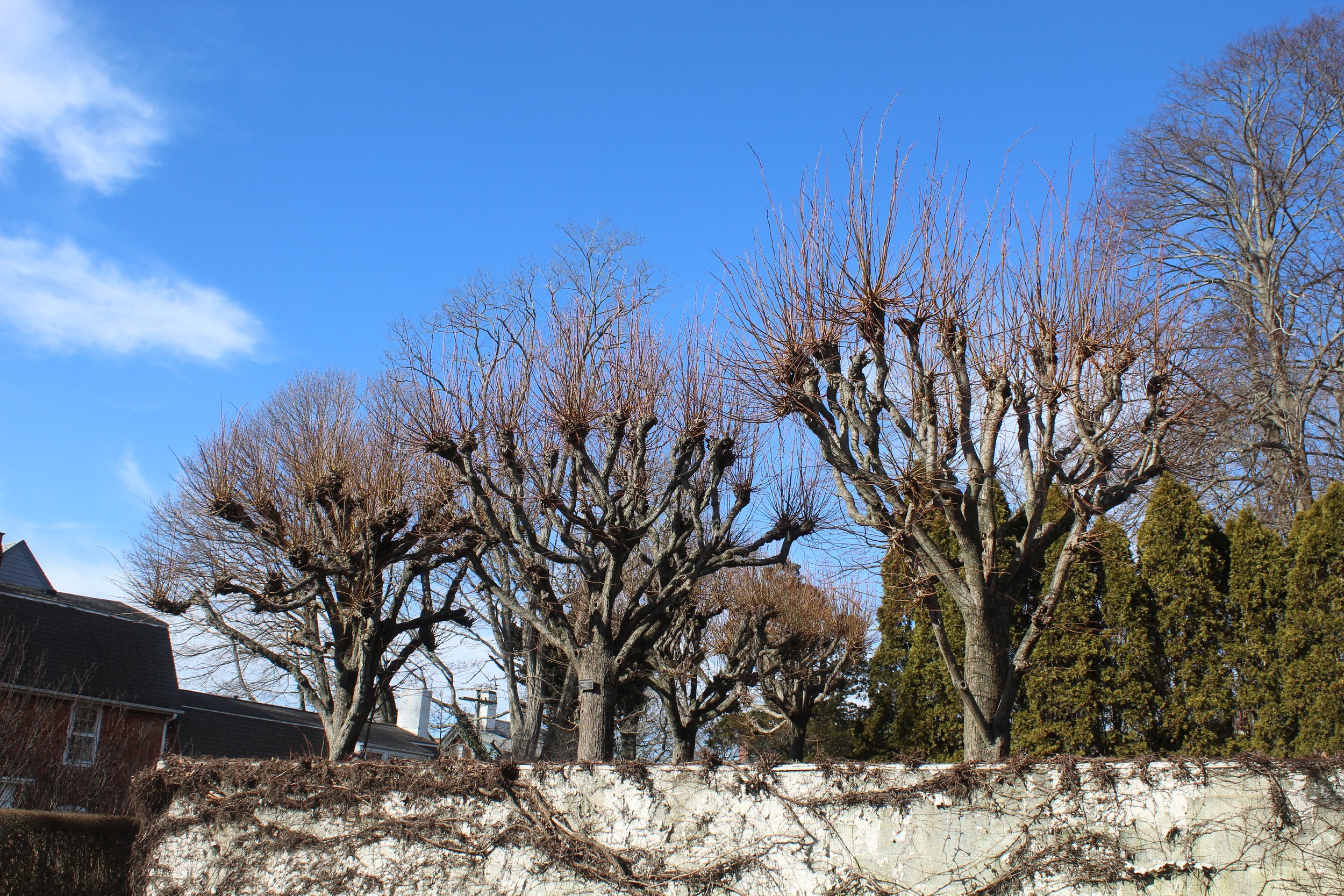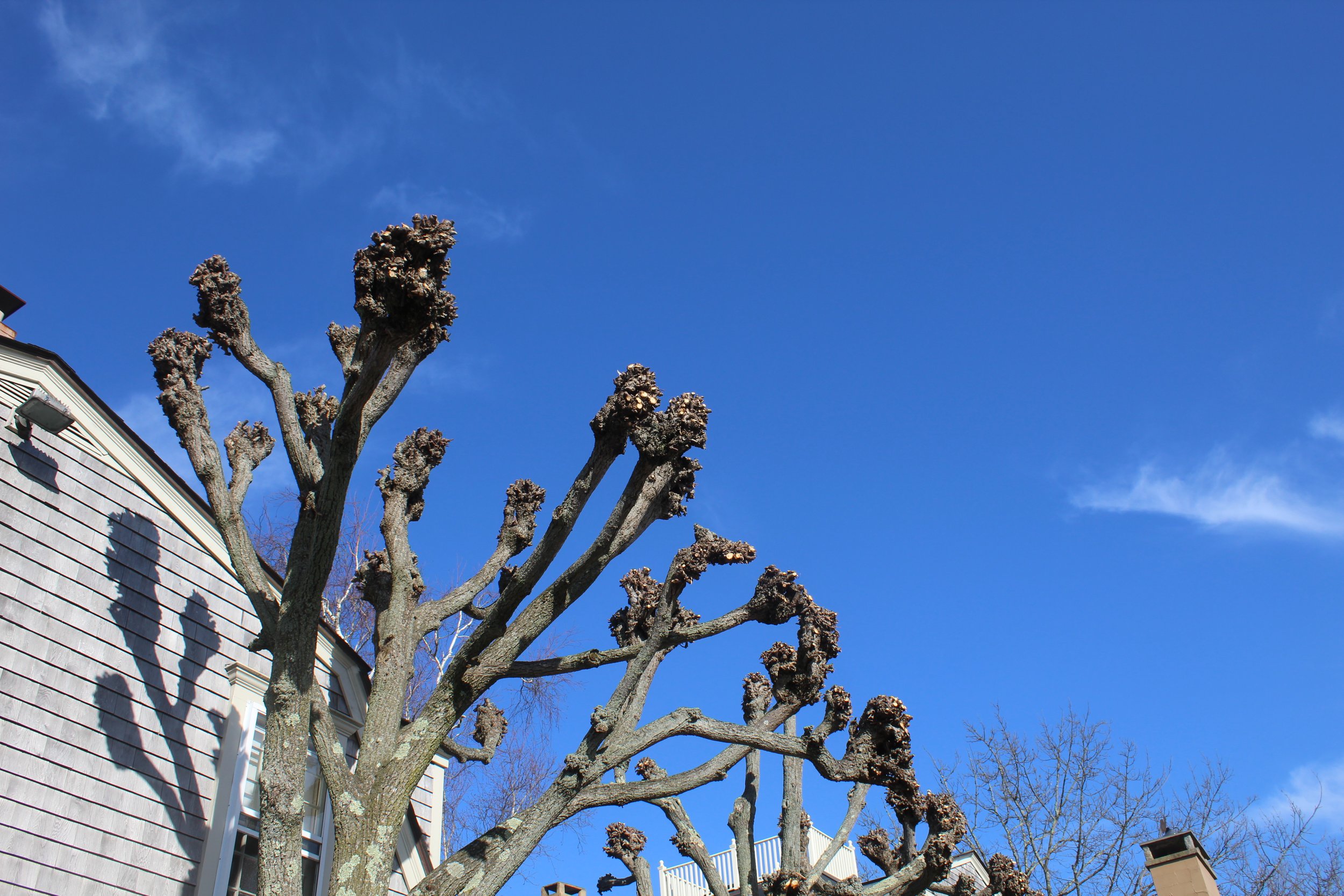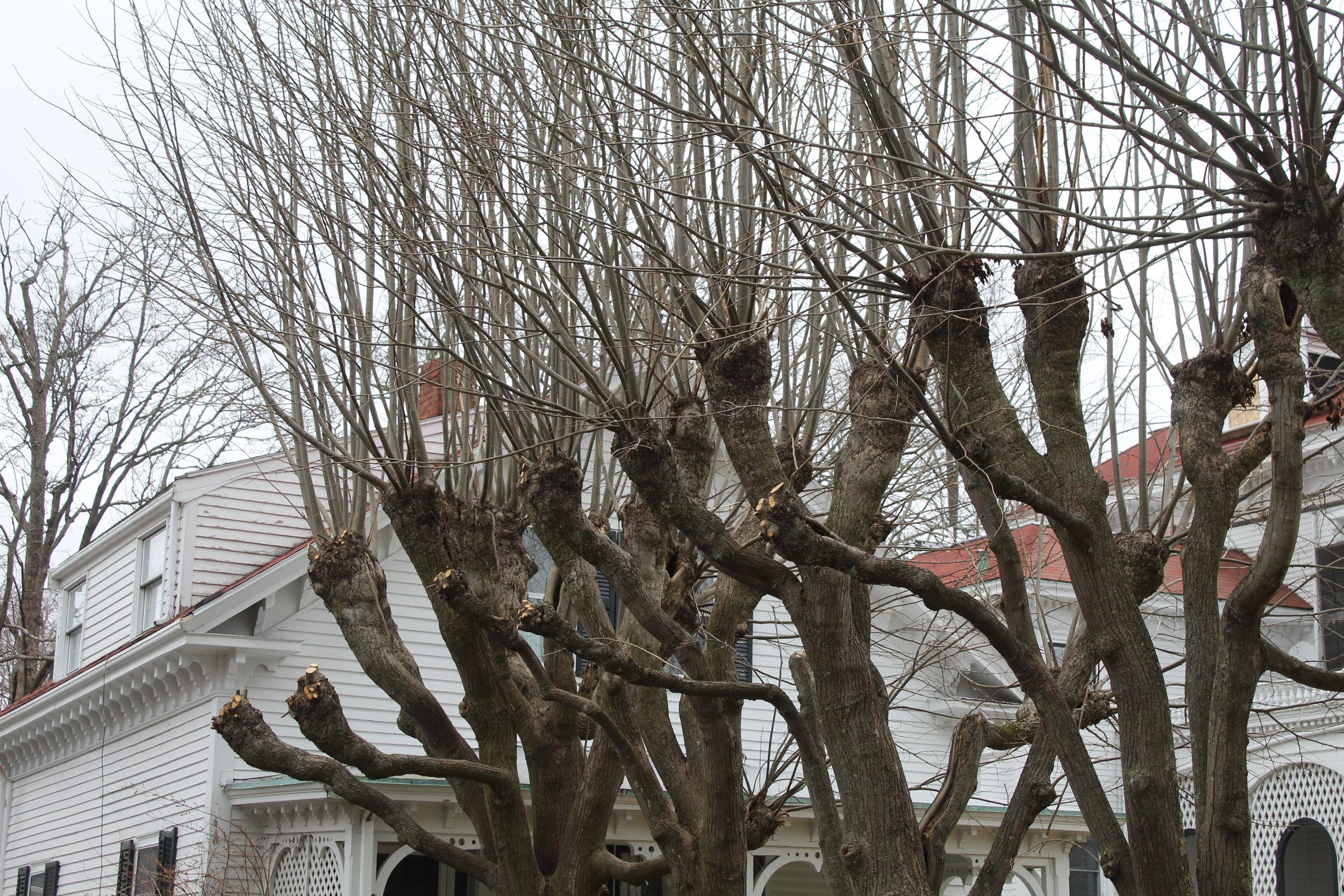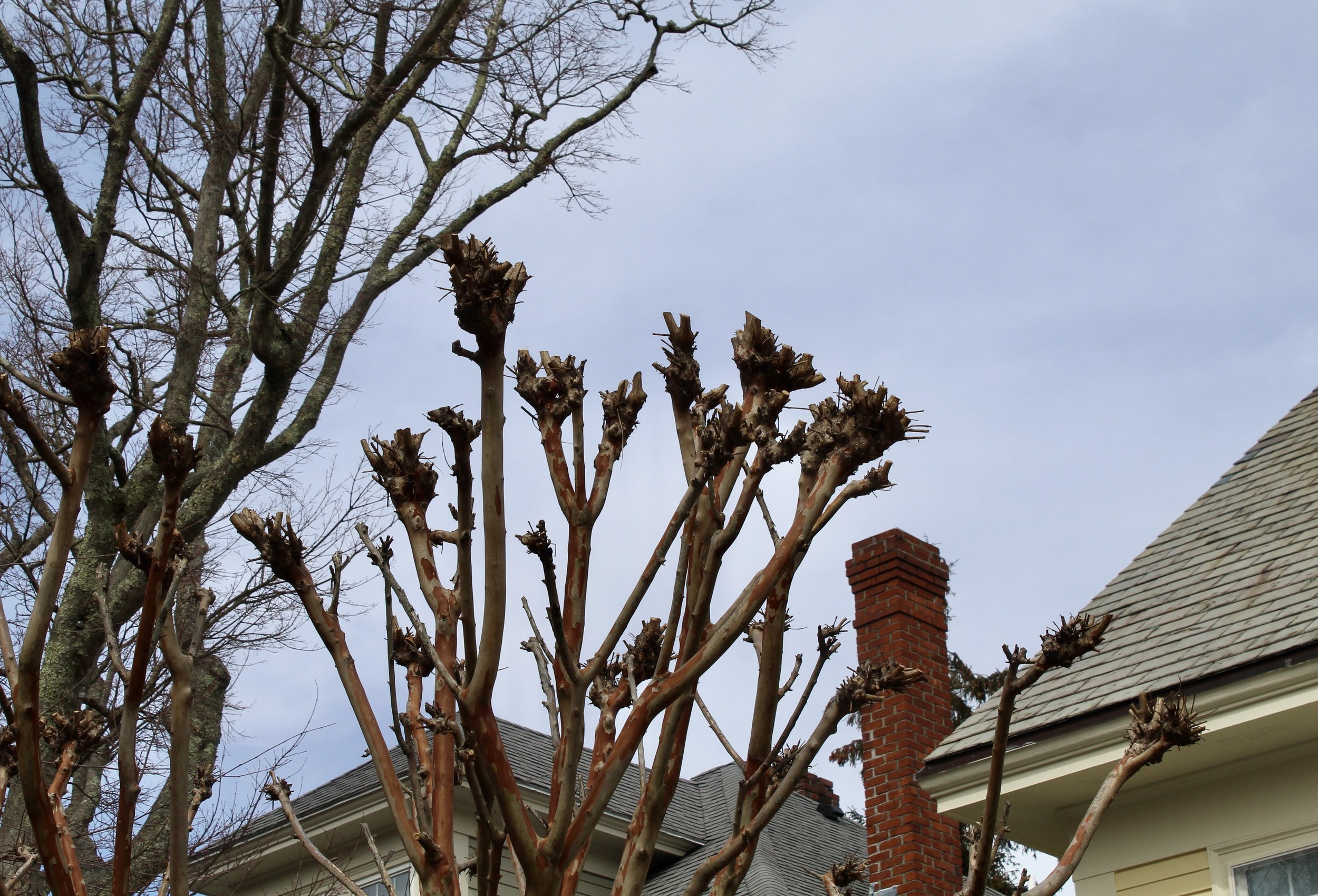Pruning with Purpose – Pollarding





An interesting sight you may come across in various formal landscapes throughout Newport is a pruning technique called pollarding. Pollarding is the act of repeated pruning back to the same spot on a major branch. It is a technique that has been utilized for centuries, especially in Europe where it is commonplace. Pollarding maintains trees at an exact size, producing vigorous shoots that grow leaps and bounds, only to be chopped back again in a repeated process. Historically, it is most common on elms, lindens, and willows. Some of you may be familiar with the whomping willow from Harry Potter, which in the movies is portrayed as being heavily pollarded.
Pollarding has been practiced since the medieval times. It was used as a way to generate renewable shoots used for crafting and building, and as a food source for livestock. Long sprouts could be used for fence making, basket weaving and boat building, among other things. Over time, people found that pollarding actually helped trees live longer, as it trapped trees in a juvenile state. Today pollarding is done to maintain the size and shape of trees, while also creating an intriguing formal appearance. The repeated cuts cause the branch end to swell into a club-like knob, from which sprouts raise up. This gives the tree a unique appearance that comes across as both interesting and possibly a little mystifying.
Pollarding can only be successful on species that readily produce epicormic growth, or growth from dormant buds hidden under bark. This type of growth is triggered when the plant is damaged or stressed. The pruning is usually done around now, in late winter to early spring. Cuts are made right down to the “club”. This will promote extensive shoot production come spring. Shoots on some species, such as willow, can grow as much as 15 feet in a season. Pollarding can also be utilized on species that flower on new wood, such as crape myrtle and tree hydrangea, to produce large flowers on happy, vigorous growth.
